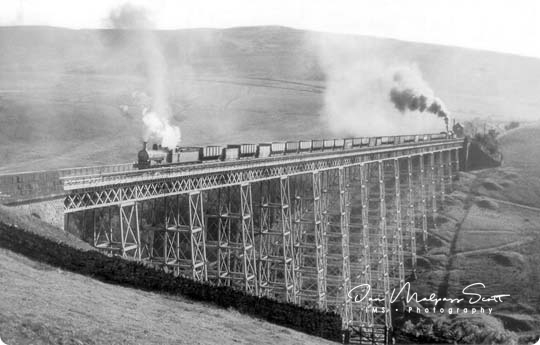The Belah Viaduct was a railway viaduct on the South Durham and Lancashire Union Railway, crossing the River Belah, in Cumbria, England, about a mile south of the village of Barras and 4 miles east north east of Kirkby Stephen. It was completed in 1860 and has been demolished.
The viaduct was designed by Thomas Bouch and the ironwork was supplied and erected by Gilkes Wilson; both Bouch and Gilkes Wilson were also responsible for the later Tay Bridge. It had lattice girders on cast iron columns, and was constructed at a cost of £31,630. The foundation stone was laid in November 1857.
The first locomotive crossed the viaduct in November 1860, and the line opened on 7 August 1861.
It was 347 yards (317 m) long, 24 feet (7.3 m) wide, with 16 spans, and at 196 feet (60 m) it was the highest bridge in England when it was built (but 4 feet (1.2 m) lower than the Crumlin Viaduct in Wales).
Post-WWII, weight limitations on the aging viaduct and its limited maintenance led to a ban on double heading across both Belah and Deepdale Viaducts.[4] As two light locomotives were still needed to haul trains up the inclines of the Tebay line, one worked as a banker at the rear. This also caused problems if the breakdown crane from Darlington was needed. This 45 ton crane itself had a weight of 156 tons. Hauling it across the viaducts required it to be spaced from the locomotive by at least three empty wagons, to distribute the load.
In 1956 the viaduct was completely repainted, which “might have implied to some that BR valued the line as a long-term proposition”, but the closure of the line was announced in 1959 and the final passenger train ran on 20 January 1962. The viaduct was demolished in the summer of 1963.


